By Rick VanSickle
Eight years ago, Corey Mio hadn’t even tried a glass of Niagara wine let alone harboured visions of buying a vineyard in the heart of the region.
It was a first-time getaway to Niagara wine country with then girlfriend Lena in 2016 that changed everything for the couple. “I knew nothing about viticulture or wine eight years ago,” Corey Mio told Wines in Niagara. Following their weekend of tasting and exploring in wine country, and a few subsequent visits, two extraordinary things happened for Corey and Lena. “I fell in love with her, and Niagara wine specifically.”
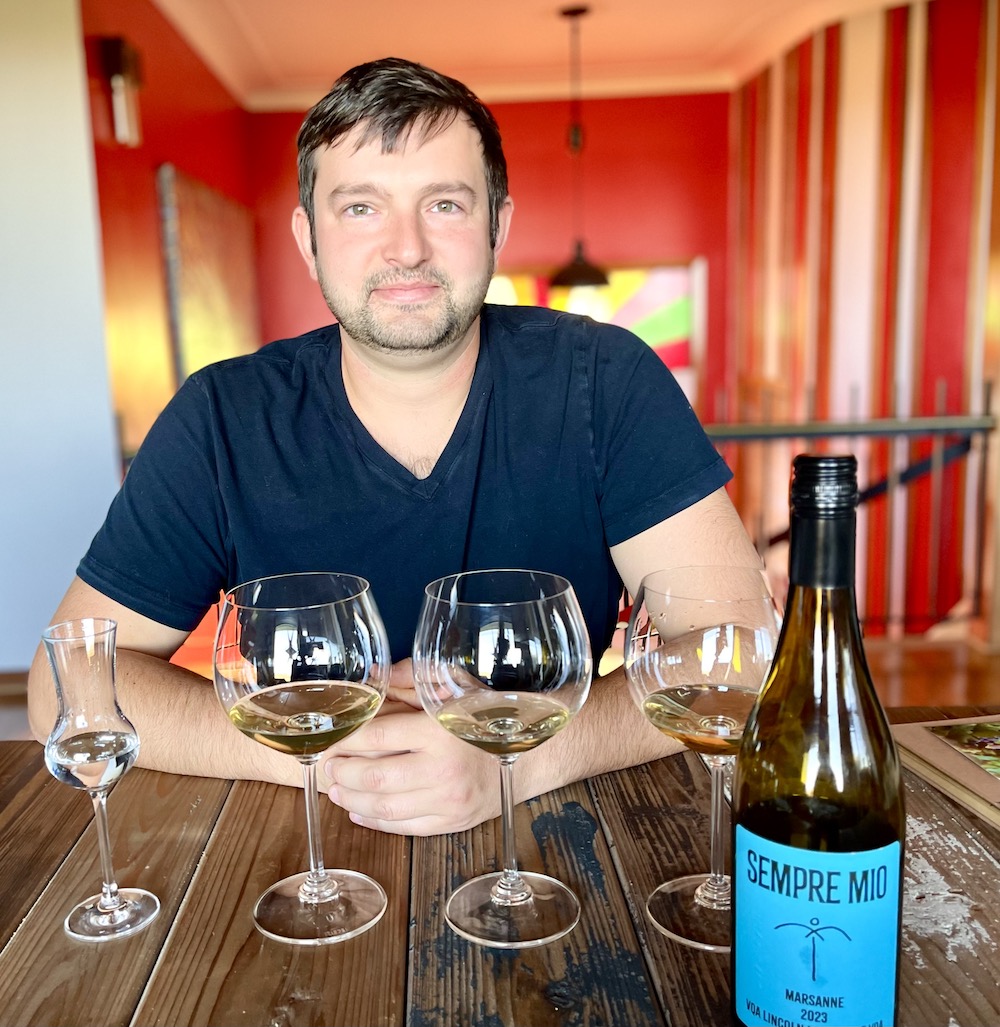
They married not long after and “decided we could make a go of it if the opportunity came up to purchase land in Niagara and try our hand at a different life. And we got very lucky with our property,” Mio, above, said. After catching the “wine bug” he proceeded to get his WSET Level 1 and Level 2, and the couple began their quest to buy a farm.
The Beamsville property that eventually caught their eye in 2017 was located on Old Highway 8, on the north side, in the Lincoln Lakeshore sub-appellation. The farm is across the road from Kew Vineyards and shares a border with both the Keczan Vineyard to the north and northwest and Black Bank Hill to the far north. When they purchased the 17-and-a-half-acre farm, there were no vineyards, no crops, just three houses in need of work, forests and fallow fields. “As soon as we saw this place, we knew it was the one,” said Mio. They put in an offer for the entire property, all they could afford, and surprisingly closed the deal quickly.
They renovated the houses, leased two of them out, kept one for themselves and began the daunting task of clearing trees and brush and then planting grape vines. “Truth is,” Mio said, “it was at the perfect spot and the perfect time. There is zero chance if we had to try and do it now that we would be able to. In saying this, I wanted to learn everything I could about Niagara wine. It was all I was passionate about … not Italy or France or California. Niagara. I cannot tell you how cool it feels now to be working with and meeting some of the talented and inspiring people here that propelled us to want to endeavour growing grapes and making wine here.”
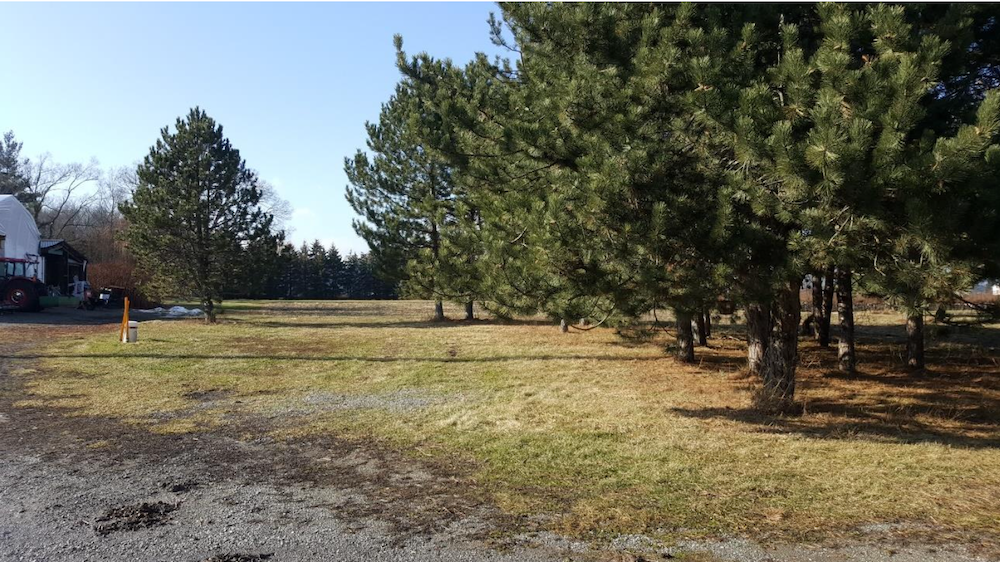
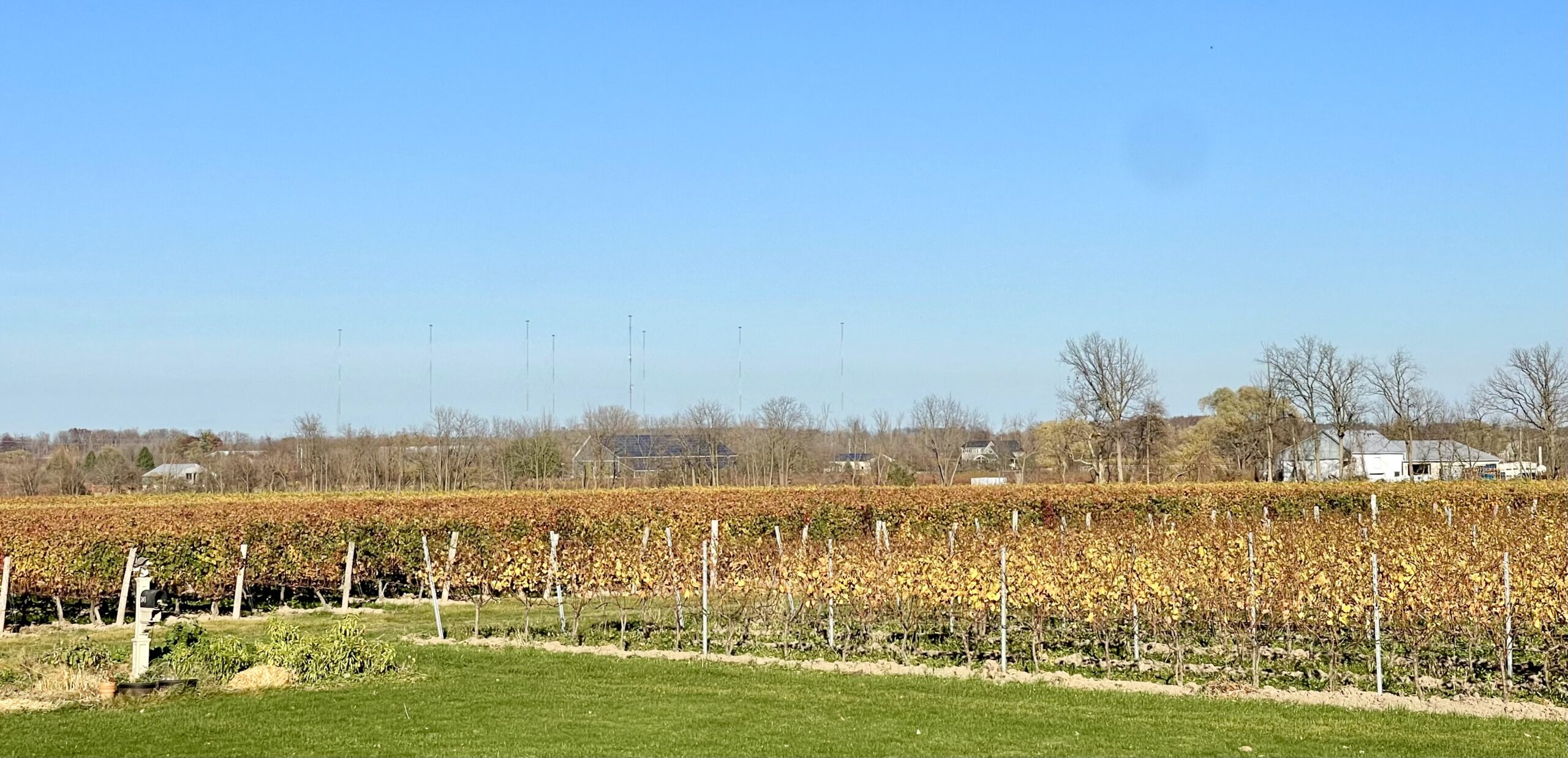
“We’ve quietly spent the last seven years developing this fallow and neglected farm into our home- productive, loved, and teeming with life,” said Corey. “We set down roots, literal and figurative. We married here on our farm. Our son (Luken) was born here. We tend to the garden and work the land- planting new vines as we can, while maintaining our careers outside of the wine industry. There is not a task, from vineyard establishment to wine production, that we have not personally participated in, if not done ourselves.”
The property is currently planted to 12 acres of sustainably farmed vines, all planted north to south with a subtle slope toward the lake. Most of the soil is loamy phase Trafalgar on top of Morley, a 50/50 mix, while neighbouring vineyards have a high red clay component.
“Beyond their mesmerizing colour, these glacio-lacustrine smectite deposits (below) are beloved and revered the world over for their distinct impact on the vines grown on them,” said Mio. “Agronomically, they limit vigour and bring balance to the vine through their high-water retention — particularly helpful during the hottest and driest summer months. Moreover, they are known to impart an intense power to the wines made from what is grown on them (most commonly, perhaps exclusively, Merlot).”
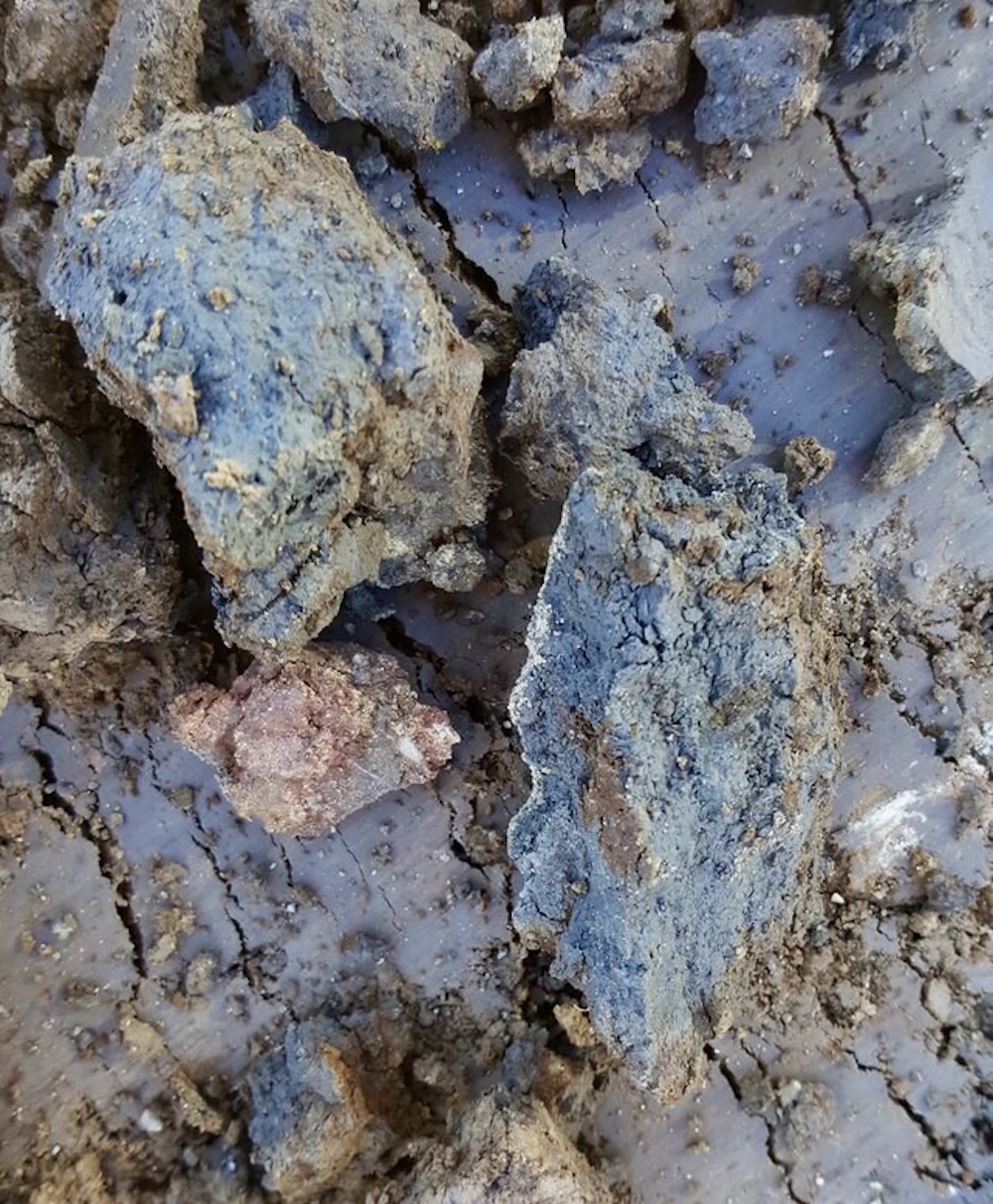
Mio has come across a particular horizon on the farm with veins that branch out like webs, pretty much directly in the middle of the vineyard. In its most concentrated pocket, they’ve planted Chardonnay on top. Specifically, a Corton Charlemagne massal selection taken from cuttings in a grand cru vineyard by the former vineyard director of Louis Latour almost 40 years ago. “I am hopeful and excited for the union between this variety, selection, and terroir and curiously ponder what the impact could be on Chardonnay. The future awaits,” Mio said.
The grapes planted thus far include Chardonnay, Cabernet Franc, Cabernet Sauvignon, Gamay, Marsanne, Viognier with the first known planting in Ontario of Albariño to begin next spring, because “someone has to do it.” The two largest plantings are Corey Mio’s favourite grape, Chardonnay, consisting of 33% of the overall plantings, followed by Lena’s favourite grape, Cabernet Franc, which is another third of the vineyard. The final third is a combination of the rest of the varieties.
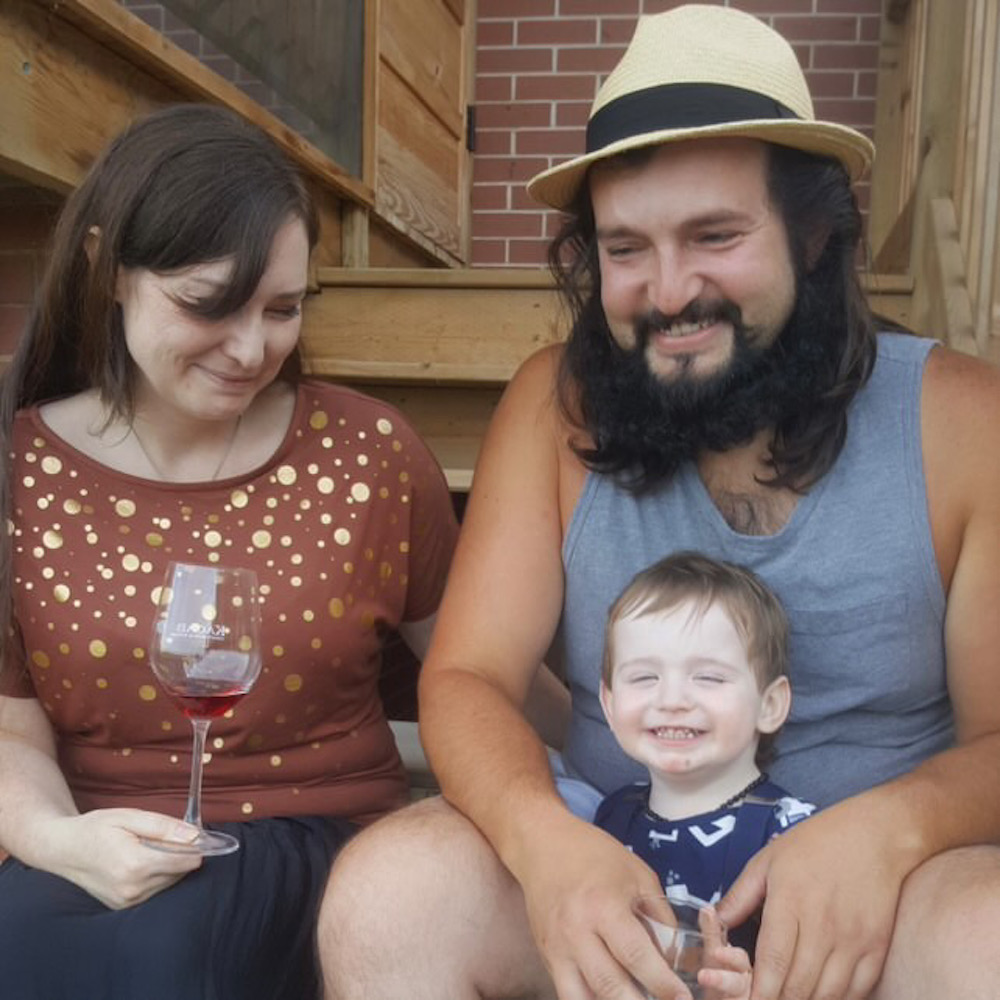
And then there are the clones. “I’ve done at least 1,000 hours of clonal research. My passion is clones. I find it under-explored here,” Mio said. “Especially the ones that do well.” There are 13 Chardonnay clones alone planted in the vineyard and at least eight of them included in the first release of his own label Chard being bottled this spring. The clones include VCR 10, Hyde Wente, 76, 548, 1066, 1067, 1068 and Corton Charlemagne. It doesn’t get any geekier than that.
“We’re building our winery to be different,” said Mio. “It’s just not about where the grapes are grown, it should also be about what you’re growing. All these clones have different attributes.”
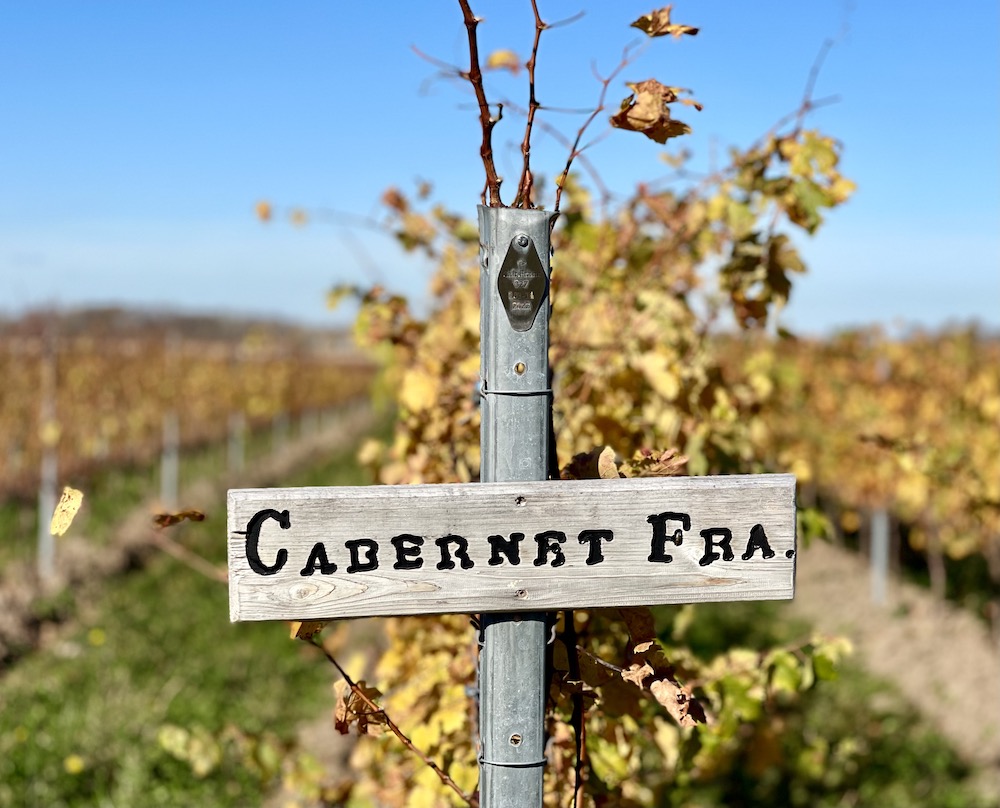
As we toured the vineyard in a zoomy modified all-terrain vehicle, I could see how the farm was divided into two defined parcels — one is a tiny “small rows” Chardonnay planting separate from the larger, main, L-shaped home vineyard for more Chardonnay and the rest of the grapes. Mio pointed out the land where the forests have been cleared to make room for future plantings. All the work at the farm has been done by the couple — including all the pruning during the winter months. And they do all that while working full-time and raising their young son Luken.
The Mios, Corey, 33, and Lena, 40, are taking it slowly and building their wine project methodically and within their means. Lena works from home for John Deere and Corey for the family’s manufacturing business in Pickering, which gives him the “flexibility” to put more time into working on the farm.
Currently, most of the grapes, which were only planted beginning in 2019, have been sold to other wineries with the Mio name starting to appear on some elite single-vineyard wines, including Thomas Bachelder’s Gamay series and the recently released Bachelder Chardonnay lineup. The B.C. winery Tantalus Vineyards bought most of the Chardonnay this year to fill a void left by two bad winters in the Okanagan Valley. While the goal is to become a full-fledged estate winery sometime down the road, the Mios are starting slowly with their brand while they finish planting the vineyard that will fuel their own estate brand.
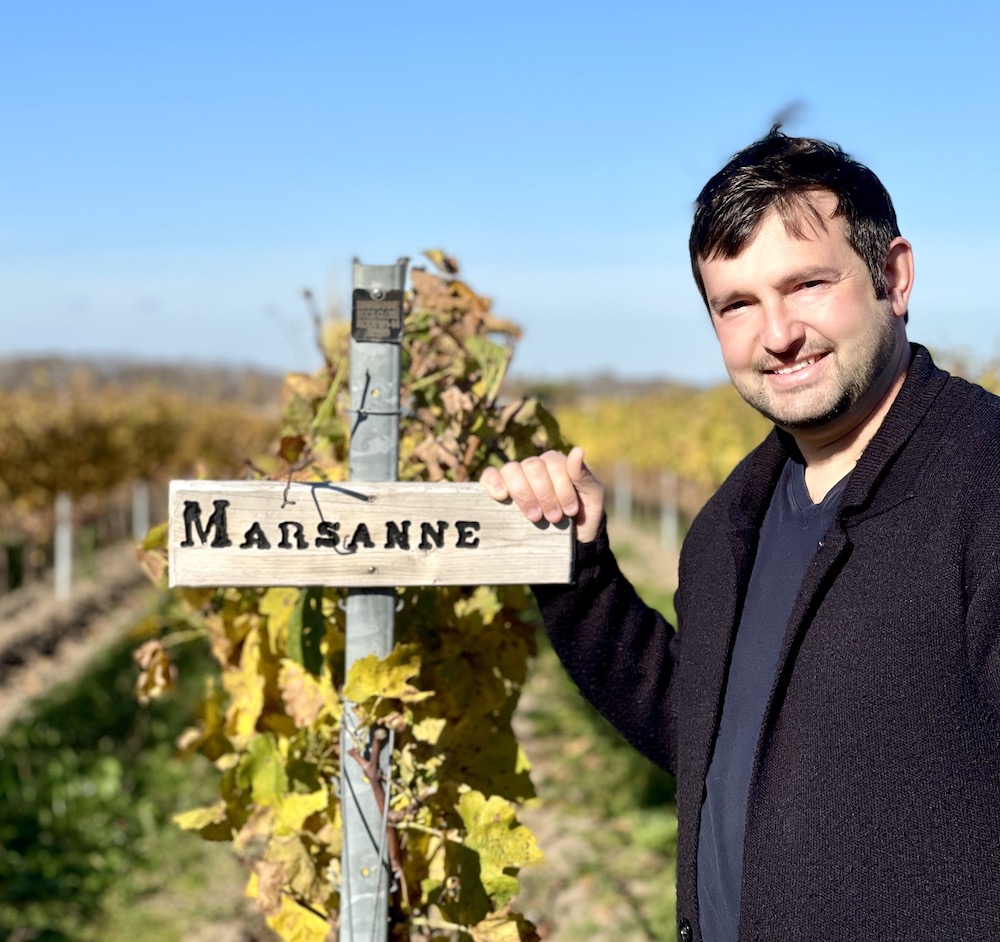
From the 2023 vintage, the first two estate wines were made under the Sempre Mio label — a Marsanne and a Chardonnay — plus a Merlot sourced from neighbouring Keczan Vineyard. Only the Marsanne has been labeled and recently released, first by the Crushable Wine Club and now, as of today, through Collab Wine and Beverages here.
“We loved and still do love Kew Marsanne,” said Mio. “It was the only one in Ontario for a long time and we eventually moved pretty much across the street from them. We surmised that if they could grow it and keep it alive, we had a good shot, too. Those wines, especially the 2014 and 2015 vintages, were the reason we planted it. I love it. I’ve since had some Rhone, as well, of course, but I am really stoked to hopefully see more Ontario examples in the future. I think it is really underrated both on the wine end as well as agronomically. It holds up pretty well here in Ontario, at least at our farm. I had less winter damage in it than Gamay for example, and it really holds up against mildew pressure.”
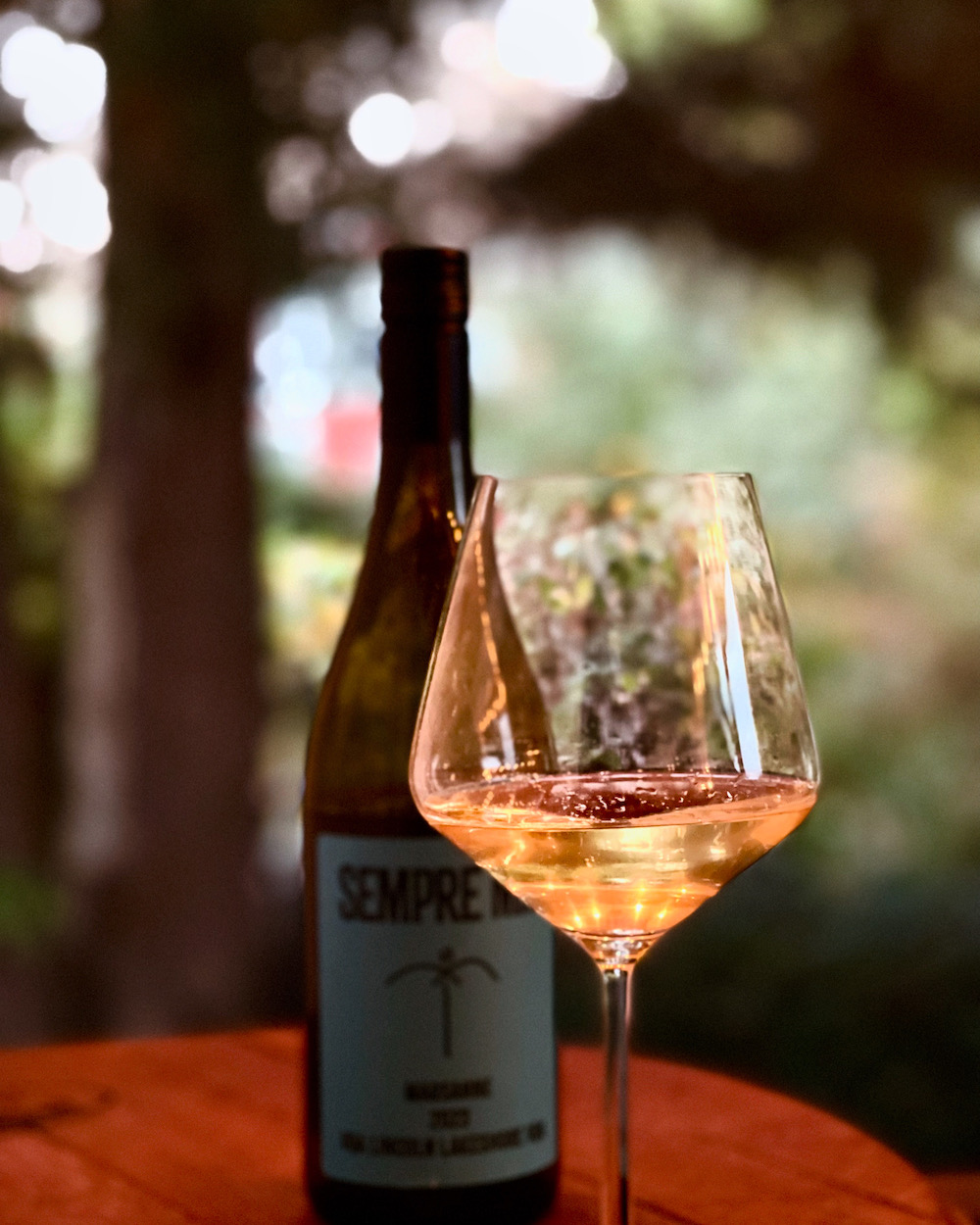
The name Sempre Mio, which is Italian for forever mine, was the alternative name for the couple’s brand after discovering they could not use Mio as the primary word on the label.
MiO, spelled that way, is a liquid water enhancer manufactured by the Kraft Heinz food company. It’s kosher, vegetarian-friendly, and comes in many flavours and four product lines. According to the mega company, the word “mio” can be translated from Spanish or Italian to mean “mine.”
The brand MiO is a trademark registered by Kraft, and even though it’s Mio’s family name, it’s a no-go on the label (unless they want to start a David vs. Goliath lawsuit) and thus they came up with Sempre Mio, the brand name for Mio wines going forward.
Wines in Niagara tasted both the Sempre Mio Marsanne, Chardonnay (barrel sample) and a cool grappa Mio’s grandfather made from estate grapes for this report. Here is what I liked:
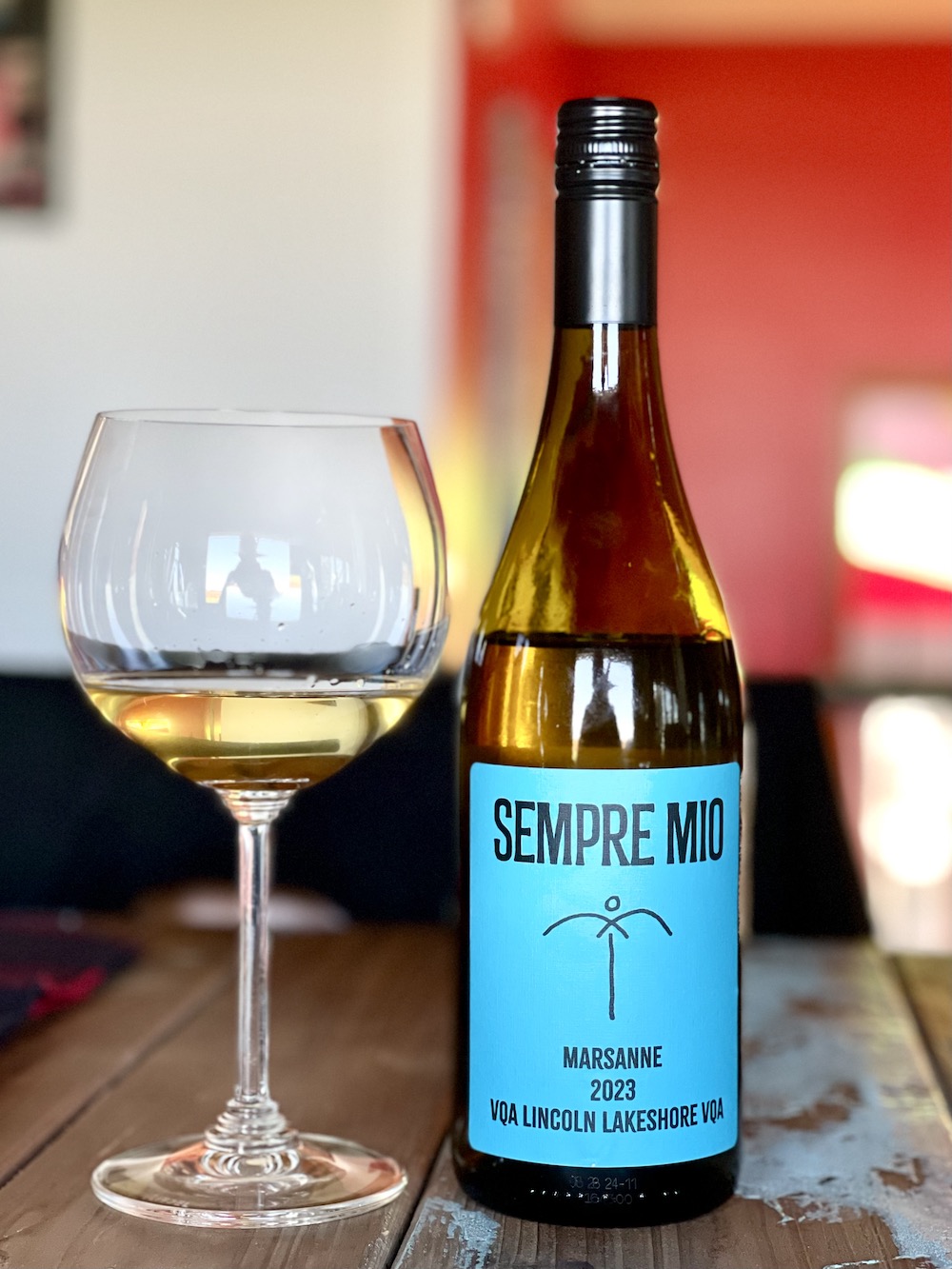
Sempre Mio Marsanne 2023 ($33, available through Collab Wine and Beverage, 93 points) — The blend for this debut wine from Mio is 87% Marsanne and 13% Viognier and it’s crafted by Jeff Moote at Collab Wine and Beverage. The Marsanne was co-fermented with the Viognier, whole cluster pressed straight to barrel on hard lees, with bâtonnage until primary ferment was done (all wild primary and malo) in 2nd fill and neutral barriques. It was then aged for 11 months before bottling. Aside from sulphur additions and yeast nutrient, there were no other additions. Only 105 cases of this wine was made and there is somewhat less than that now available through Collab. It’s a beautiful wine for a first effort from a grape made famous in the Northern Rhone (think the legendary white wines of Hermitage) but rarely grown or made in Niagara. The nose is rich and perfumed with beeswax, honeysuckle, dried apricots, candied lemons, peach, subtle notes of almonds, spice and hinting at reduction that tapers off on the palate. In fact, we tasted two versions of this wine, one was opened right away and another that was decanted. The decanted version had nearly zero reduction. It has an oily, beeswax texture on the palate with persistent notes of ripe peach, apricot tart, honey, lanolin, toasty spice notes, marzipan and a fair amount of tingly acidity for a variety that often lacks freshness. The finish is long and luxurious. This is a remarkable wine that will be interesting to watch as it ages gracefully in your cellar.
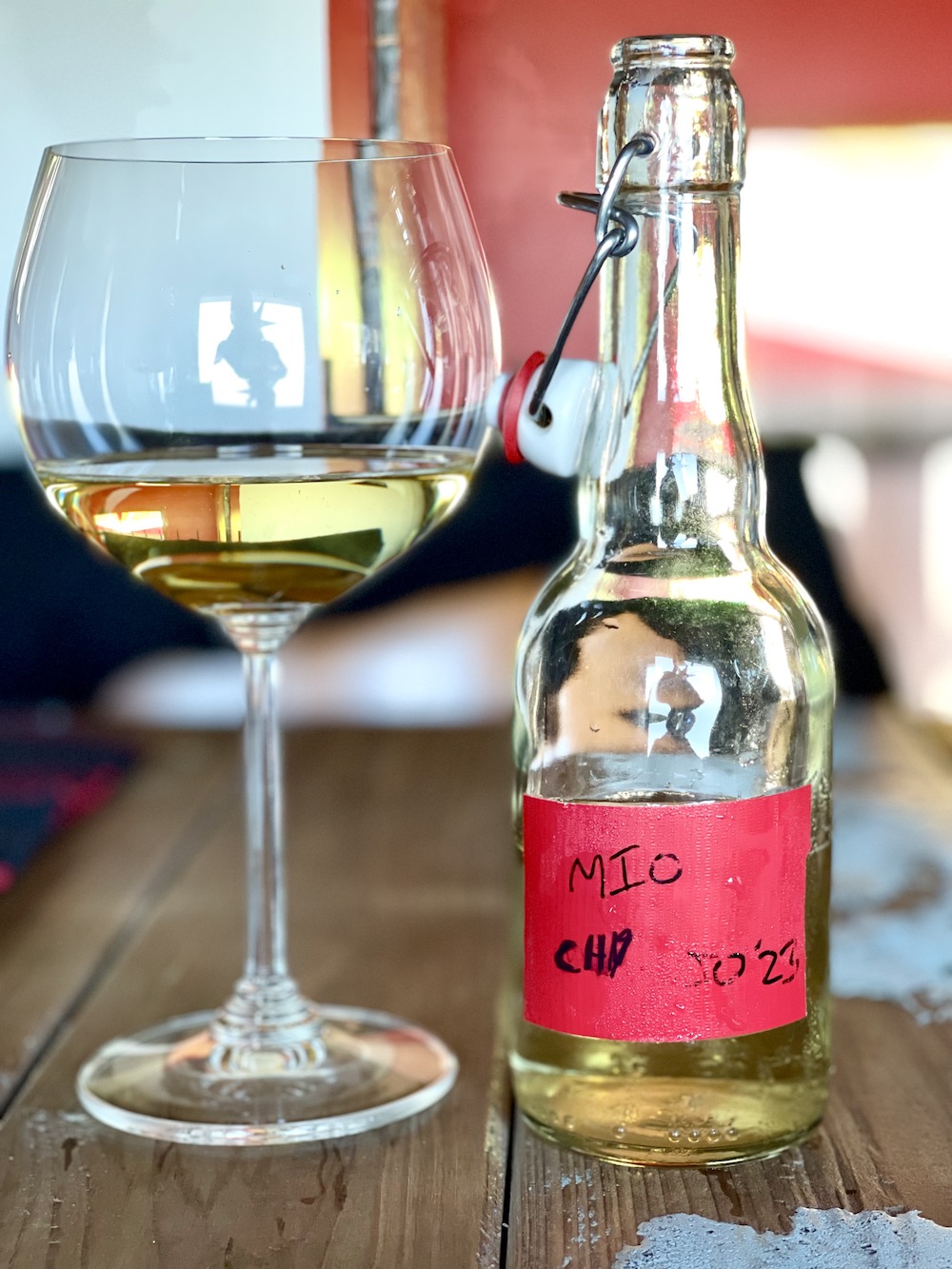
Sempre Mio Chardonnay 2023 (barrel sample, price not available) — The Chardonnay we tasted was a barrel sample that will be bottled in February for summer release. We already know that the Mio estate Chardonnay has caught the eye of terroir hunter Thomas Bachelder (see a review below of the 2022 vintage Chardonnay), so the Mio version will come out of the gate with some wind in its sails. The sample I tasted was lovely with a mineral-rich nose of saline, a touch of flint and then pear, white peach, lemon tart and integrated spices. It’s mouth-filling on the palate with ripe orchard fruits, apricots, nectarines fresh saline, lemon zest and spice with a refreshing, lifted finish. Looking forward to tasting this when it comes out next summer.
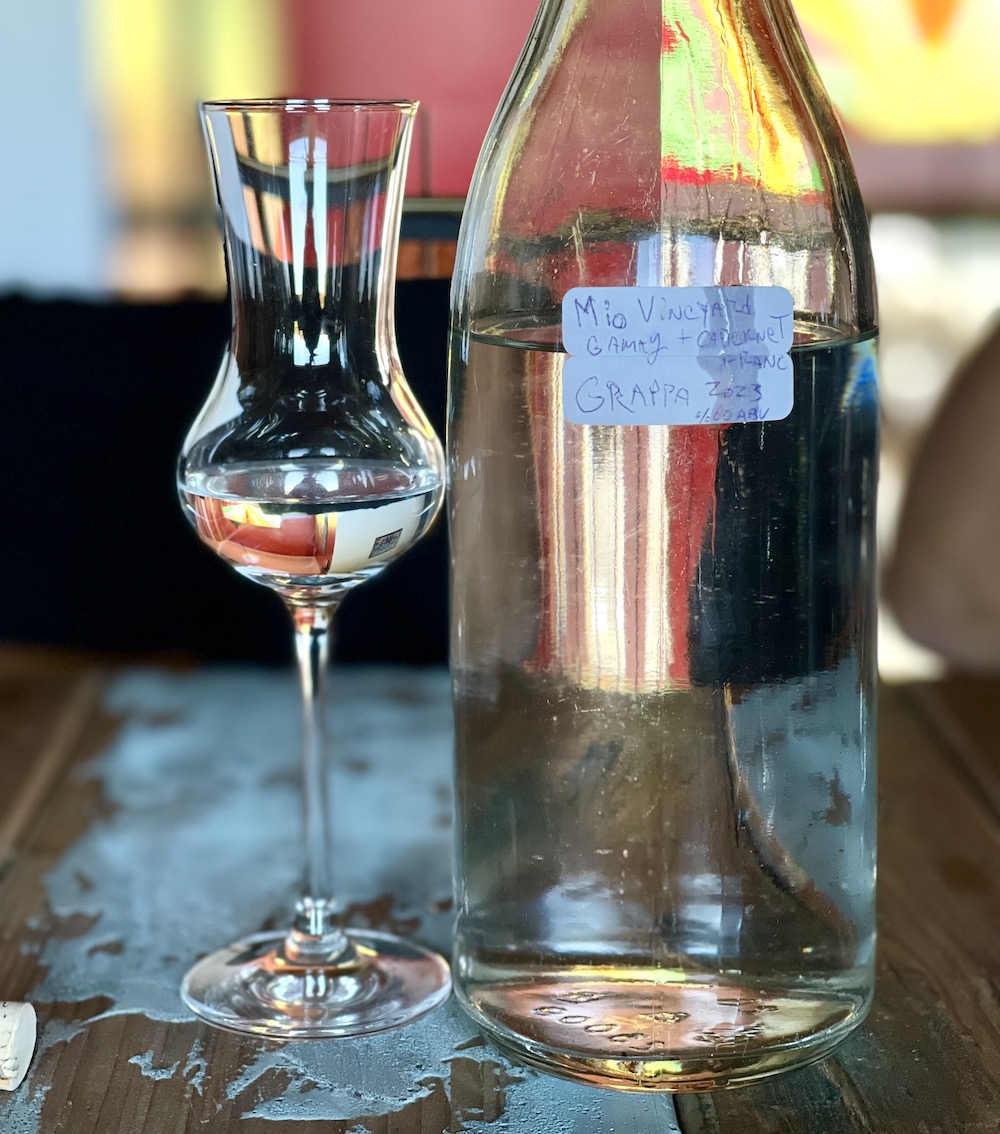
Mio Vineyard Grappa 2023 (not for sale, only one bottle made) — Corey Milo’s grandpa, who doesn’t drink anymore, still has the passion to make grappa like they make it in Italy. Grappa is a fragrant, grape-based pomace brandy of Italian origin that contains up to 60% abv. It’s made by distilling the skins, pulp, seeds and stems (i.e., the pomace) left over from winemaking after pressing the grapes. The Milo grappa is made from estate Gamay and Cabernet Franc grapes and finished at the very high end of alcohol content. And it’s rare! One single bottle that grampa laboured over in his garage for Corey and Lena. It does have a bright and floral nose that entices you to go in for a sip. That 60% alcohol hits you right away, so much so it takes your breath away. Once recovered, it goes down a bit smoother and shows fruitier notes. You need to sit down and not be going anywhere before proceeding further.
Two other Mio wines in the market
Corey and Lena Mio are just getting started selling their grapes in Niagara and transforming to a full-fledged estate winery. Thomas Bachelder is one of the first to notice the Mio Vineyard grapes and has bought both the Chardonnay and Gamay for his spring and fall Bachelder releases. Here are my previous reviews of both wines, which are still available for sale.

Bachelder Wines Mio Chardonnay 2022 ($45, 93 points) — Although on the opposite side of Old Highway 81, there is a nice slope there, and “a very ‘Benchy’ vibe to the wine (but you’ll also feel a few nods to the Lincoln Lakeshore flavours),” said Thomas Bachelder. This is the first Chardonnay from the Mio Vineyard to hit the Bachelder lineup. The nose is overt with ripe pear, grapefruit/lemon notes, a floral edge, and fresh saline with apple and spice. There’s good concentration on the palate with rich and savoury pear dominant stone fruits, subtle flinty notes, lemon tart, spice and a lifted, long finish. Can cellar to 2028.
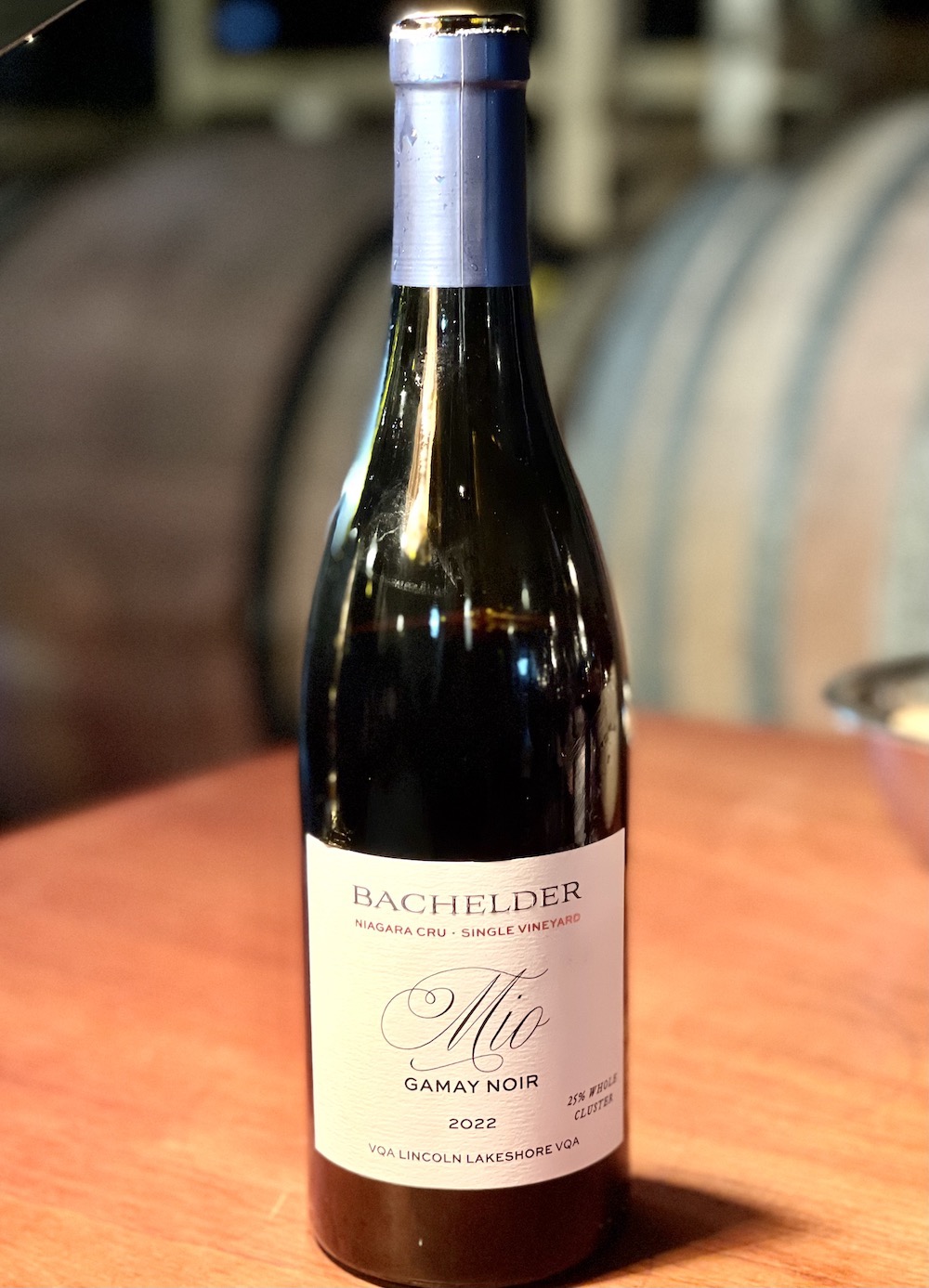
Bachelder Mio Gamay Noir 2022 ($29, 92 points) — “Corey Mio and his family have spent years building a beautiful vineyard on the Lincoln Lakeshore in Beamsville,” says Bachelder. “Mio has an amazing vista – big sky country — gently-sloped towards the lake. Mio is quite varied in soil makeup, located just below the bench and north of Highway 8.” 25% whole cluster pressing is used for this Gamay. An interesting, more earthy nose, with notes of brambly raspberries, kirsch-like cherries, wild Muskoka blueberries, juicy purple plums, perfumy spice notes and a touch of savouriness. It’s nicely structured on the palate with concentration of red and dark berries, anise/licorice, earthy/savoury notes, spice, and a juicy finish held together with racy acidity. Cellar to 2028. 48 cases made.
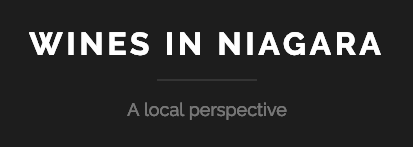

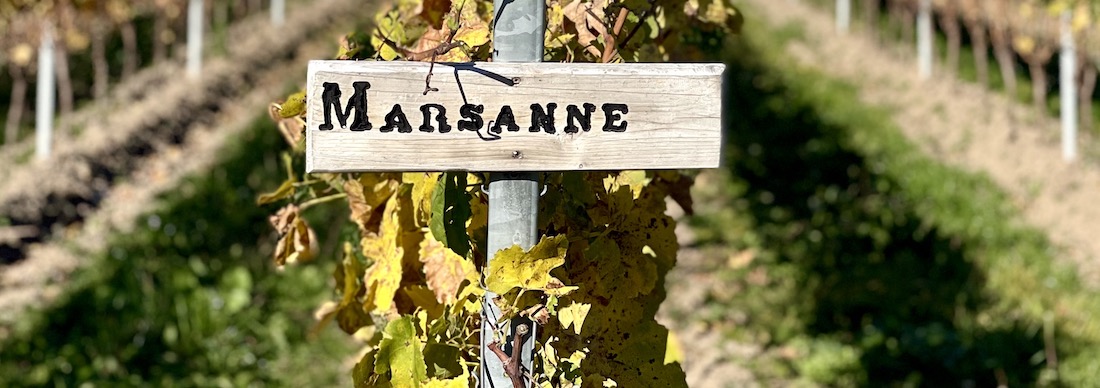




Comment here